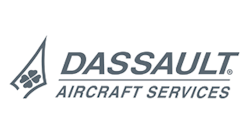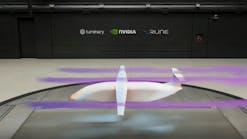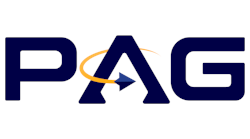“Can you quick check this part for a possible crack?” If only I had a nickel for every time I heard that phrase. In my 23 years of inspecting aircraft for cracks and corrosion, I would have to say eddy current inspection is the most diverse, time-saving inspection method used in today’s fast-paced aircraft inspection world.
Here is an easy-to-follow explanation of eddy current testing in which I will answer a few typical questions such as:
- What is eddy current inspection?
- Who can do eddy current inspection?
- How can I get certified to do eddy current inspection?
- What are the eddy current inspection applications that would help me or my facility?
- What is the latest technology in eddy current inspections?
These are all good questions every director of maintenance or maintenance facility should ask themselves when they’re looking for a possible way to expand their inspection capabilities.
What is eddy current inspection?
“Eddy current” is a nondestructive testing (NDT) method that uses electricity and magnetism or electromagnetic induction to create a magnetic field in the article under inspection. Some of the most common benefits of using the eddy current method include:
- Sensitive to small cracks and other defects
- Detects surface and near surface defects
- Inspection gives immediate results
- Equipment is very portable
- Method can be used for much more than flaw detection
- Minimum part preparation is required
- Test probe does not need to contact the part
- Inspect complex shapes and sizes of conductive materials
Some of the limitations of using the eddy current method include:
- Only conductive materials can be inspected
- Surface must be accessible to the probe
- Skill and training required is more extensive than other techniques
- Surface finish and roughness may interfere
- Reference standards needed for setup
- Depth of penetration is limited
- Flaws such as delamination that lie parallel to the probe coil winding and probe scan direction are undetectable
Who can accomplish eddy current inspections and how can I get certified?
Eddy current inspections can only be accomplished by qualified and certified NDT personnel as stated in NAS 410 “Certification & Qualification of Nondestructive Test Personnel.”
At a minimum the technician performing eddy current inspection is required to have 40 hours of formal classroom training and 1200 hours of on the job experience before performing eddy current inspections on aircraft and accepting or rejecting parts. Most technicians are tested every three to five years. Inspectors must complete a general knowledge exam (40 questions), a specific examination (30 questions), and a practical examination all given by a Level III NDT examiner.
Additional training may be required for certain aircraft manufacturers. Specific training on complex eddy current procedures is mandatory to maintain continuity on all inspection accomplished on critical aircraft components such as; vertical and horizontal stabilizer attach points, wing to fuselage attachments, and engine turbine discs, just to list a few.
Education for eddy current certificated inspectors generally comes from attending a two year engineering program, an NDT technical school, or military technical school with NDT military work experience.
Eddy current inspections are currently used in all aspects of aircraft NDT inspections. Cessna, Gulfstream, Bombardier, Falcon Dassault, and Hawker Beechcraft are just a few aircraft manufacturers that currently use eddy current inspection procedures to maintain high standards of crack free components in the aircraft industry. These same manufacturers are creating many new eddy current procedures as new aircraft and new technology becomes more computerized. An example would be eddy current array inspection procedures. These inspections can be used for multi skin corrosion detection as well as remaining skin thickness after corrosion removal.
What is the latest eddy current technology?
Many of today’s eddy current units have color screens along with memory to store and create eddy current reports and another feature are units having detachable probes. Most equipment is very portable for work on and around aircraft structures.
Eddy current array (ECA) is a nondestructive testing technique that provides the ability to electronically drive multiple eddy current coils, which are placed side by side in the same probe assembly. Each individual eddy current coil in the probe produces a signal relative to the phase and amplitude of the structure below it. This data is referenced to an encoded position and time, and represented graphically as a C-scan image. Most conventional eddy current flaw detection techniques can be reproduced with ECA inspections; however, the remarkable advantages of ECA technology allows improved inspection capabilities and significant time savings. Eddy current array technology includes the following advantages:
- A larger area on the aircraft can be scanned in a single-probe pass, while maintaining a high resolution
- No need for complex robotics to move the probe; a simple manual scan is often enough
- Imaging improves flaw detection and sizing
- Complex shapes can be inspected using probes customized to the profile of the part being inspected
Conclusion
The eddy current method of inspection is taking the place of more time consuming and hazardous inspection methods such as radiography. In most cases eddy current inspections can be accomplished with one trained technician. Radiography in most states require two technicians for safety reasons along with the high costs of equipment and film processing chemicals and hazardous waste concerns. The eddy current process basically has no consumable materials involved such as gels, couplants, and chemicals, and most aircraft inspections are on the outer surface with no aircraft preparations. Many inspections requiring second, third and fourth layer skin inspections will be able to be accomplished at a high degree of certainty that aging aircraft components are airworthy. Any NDT inspector will advise you to thoroughly research all inspection equipment requirements, education and training, and aircraft manufactures requirements prior to accomplishing any type of inspection.
I consider myself fortunate because during my career as an NDT technician to have been able to use old and new eddy current inspection equipment. New techniques are constantly being introduced into the aerospace industry requiring shorter inspection times and at the same time requiring higher sensitivity to smaller defects. There is, as in any technical profession, a certain amount of technical training that must be regularly accomplished in order to maintain high inspection standards with a high degree of confidence in the technician and eddy current inspection equipment being used.
About the author
Mark Nistler is currently the NDT Shop Manager at Signature TECHNIAir, St. Paul, MN, with a total of 23 years experience in the NDT field. He is an American Society for Nondestructive Testing (ASNT) Level III certified in four methods: magnetic particle, fluorescent penetrant, radiography, and eddy current inspections. He also holds an A&P certificate and is currently the company Level III in Ultrasonics. Mark began his aircraft maintenance career in the U.S. Air Force performing NDT inspections on military aircraft such as the F-16, F-15, C-130, and H3 helicopters. He can be contacted at [email protected] or (651) 209-2720.





